| Columns Retired Columns & Blogs |
Wilson Audio Specialties WATT/Puppy 7 loudspeaker Measurements
Sidebar 3: Measurements
The Wilson Audio WATT/Puppy 7's sensitivity was above average, at an estimated 90.6dB(B)/2.83V/m, which is not significantly different from its predecessor, the System 5. However, also like its predecessor, it will need a good high-current amplifier before it can be driven to satisfying levels. Its impedance drops to 2.4 ohms at 78Hz and remains below 6 ohms for much of the region where music has its maximum energy (fig.1). In addition, an impedance of 4 ohms at 59Hz is associated with an electrical phase angle of -34 degrees, which will add to the drive difficulty. With both its enclosures ported, interpreting the impedance curve at low frequencies is difficult, but it appears that the Puppy's 3"-diameter port is tuned to 27Hz or so, while the WATT's 1" port is tuned to about 80Hz.
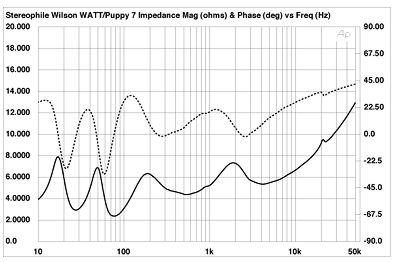
Fig.1 Wilson WATT/Puppy 7, electrical impedance (solid) and phase (dashed). (2 ohms/vertical div.)
Befitting its heroic construction, the Puppy's enclosure was extremely inert. A single mode was evident at 422Hz on its side (not shown), but this was so low in level that it should be inconsequential. The WATT had one clearly defined resonance visible on its sidewall at 266Hz (fig.2), with some other activity evident in the octave above that. As all this behavior is low in absolute terms, it should be subjectively benign.
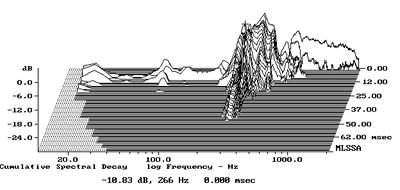
Fig.2 Wilson WATT/Puppy 7, cumulative spectral-decay plot calculated from the output of an accelerometer fastened to the WATT cabinet's side panel. (MLS driving voltage to speaker, 7.55V; measurement bandwidth, 2kHz.)
As with earlier versions of this system, the WATT/Puppy 7's behavior at low frequencies is complex. The black trace in fig.3 shows the response of the WATT's midrange unit, measured in the nearfield with the speaker driven directly by the amplifier, without being routed via the Puppy. Its output extends to below 100Hz, but is not helped much by the WATT's port (green trace, plotted in the ratio of its radiating diameter to that of the drive-unit). The red trace is the output of the Puppy's woofers. They basically cover the octave between 50Hz and 100Hz, with what appears to be a second-order rolloff above that region. The Puppy's big port (blue trace) peaks as expected from the impedance plot between 20Hz and 40Hz, which is a little low in frequency to usefully extend the Puppy's output.
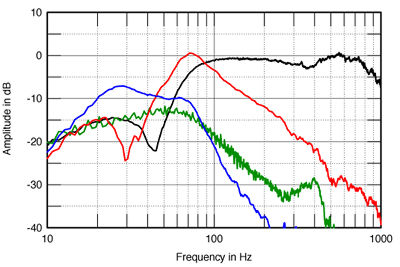
Fig.3 Wilson WATT/Puppy 7, nearfield responses of the WATT midrange unit (black) and port (green), and Puppy woofers (red) and port (blue).
As mentioned, I connected the WATT directly to the amplifier terminals to generate the black trace in fig.3; this curve is repeated as the blue trace in fig.4. However, when I repeated the measurement with the amplifier hooked up to the Puppy's input terminals and the WATT connected to the Puppy Tail, which emerges from the top of the Puppy, I got the red trace in fig.4. Either there is a series crossover element in the WATT feed or the Puppy woofers are actually connected in inverted acoustic polarity. If the latter, then what you see in this graph is partial cancellation of the WATT's nearfield output by the opposite-polarity Puppy output. I investigate this below, but it is fair to note that the WATT/Puppy 5 measured identically in this respect.
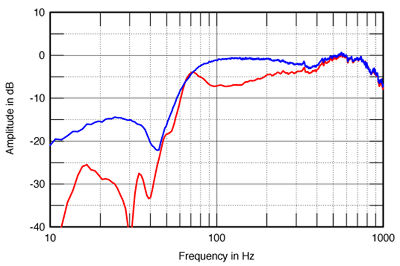
Fig.4 Wilson WATT/Puppy 7, nearfield responses of the WATT midrange unit connected directly to amplifier (blue) and via Puppy Tail (red).
Fig.5 splices the complex sum of the low-frequency responses shown in fig.3 (taking both acoustic phase and the different distances of the sources from a nominal farfield microphone position) to the response at 50" averaged across a 30 degree horizontal window on the tweeter axis. The middle of the midrange is indeed depressed—I used farfield power-spectrum measurements to check that this was the case—but the overall trend in the upper midrange and treble below 10kHz is fundamentally flat, with small peaks balanced by dips. (My sample appeared flatter in this respect than that measured at the Canadian NRC for the SoundStage review, which appeared to have a less sensitive tweeter.) Earlier versions of the WATT had a more prominent upper midrange than the 7. However, as MF suspected, the new speaker's octave between 10kHz and 20kHz is depressed compared with the 5, which delivered a full measure of treble energy between 10kHz and 16kHz.
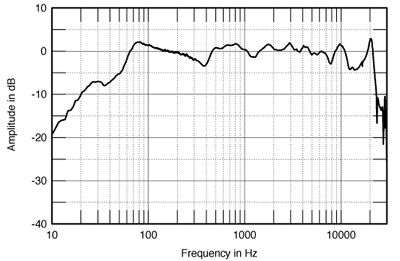
Fig.5 Wilson WATT/Puppy 7, anechoic response on tweeter axis at 50", averaged across 30 degrees horizontal window and corrected for microphone response, with the complex sum of the nearfield responses plotted below 300Hz.
The WATT's midrange unit is a bit on the large side to maintain its dispersion through the crossover to the tweeter, the crossover point appearing to lie at just under 3kHz. This can be seen in fig.6, the speaker's horizontal dispersion plot. While the contour lines are uniform and evenly spaced to around 30 degrees to the WATT/Puppy's side—something that correlates with stable, accurate stereo imaging—the octave below 3kHz is depressed at extreme off-axis angles. All things being equal, this will tend to make the speaker sound not quite as "present" in a large room as it will in a small room. However, as this coincides with a small on-axis peak in the same region, the speaker may well sound correctly balanced through this critical range. Note that the Focal tweeter is very directional above 10kHz, which will make the WATT/Puppy 7 sound a little lacking in air in large rooms. By contrast, there is a lot more energy apparent to the speaker's sides above 20kHz, though this will be an issue only for small children and large dogs.

Fig.6 Wilson WATT/Puppy 7, lateral response family at 50", normalized to response on tweeter axis, from back to front: differences in response 90 degrees-5 degrees off-axis, reference response, differences in response 5 degrees-90 degrees off-axis.
In the vertical plane (fig.7), the WATT/Puppy's balance is maintained on or just above the tweeter axis to a much greater extent than earlier versions of the speaker. Below that axis the presence region loses energy—which, I assume, is one of the reasons Wilson provides spikes of different lengths to ensure that the listener sits on the optimal axis. Suckouts develop at the upper crossover frequency for axes much above or below the tweeter.
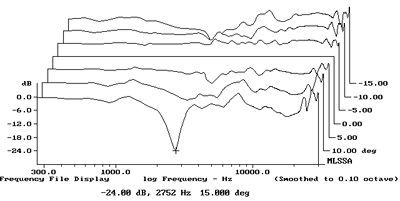
Fig.7 Wilson WATT/Puppy 7, vertical response family at 50", normalized to response on tweeter axis, from back to front: differences in response 15 degrees-5 degrees above axis, reference response, differences in response 5 degrees-15 degrees below axis.
The WATT's sloped-back baffle makes it appear as if it is a time-coherent design. However, the speaker's step response (fig.8) shows a more complex behavior. The slight negative-going spike at the start of the step is due to the WATT's midrange unit, which is connected in inverted acoustic polarity, but this spike is broken almost immediately by the sharp, positive-going spike of the tweeter. The negative-going overshoot of the tweeter's step overlays the midrange step, implying good frequency-domain integration. However, just after the 5ms mark, the once-again negative-going output of the WATT's midrange unit is interrupted by the positive-going output of the Puppy's woofers. Looking at the individual step responses of the drive-units (not shown) confirmed this diagnosis. The Watt and Puppy woofers will not sum correctly in an anechoic environment, though it is fair to point out that the situation will not be as simple in a room. Nevertheless, I note that Mikey did comment on a lack of energy in the lower mids.
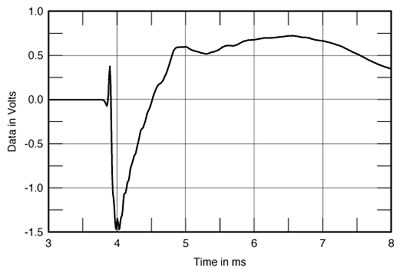
Fig.8 Wilson WATT/Puppy 7, step response on tweeter axis at 50" (5ms time window, 30kHz bandwidth).
Finally, the WATT/Puppy 7's cumulative spectral-decay plot on the tweeter axis at 50" (fig.9) was not as clean as the best I have seen, nor was it as clean as that of the WATT/Puppy 5, at least below the older version's tweeter resonance, which lay at a low 15kHz (see fig.11 in Wes Phillips 1995 review. But the initial decay is very clean, which presumably explains why neither MF nor I, in my auditioning of the speaker in his room, was bothered by treble grain.
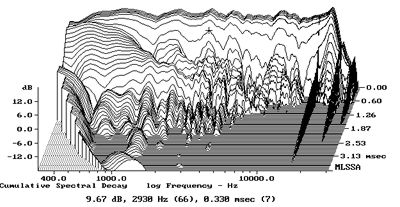
Fig.9 Wilson WATT/Puppy 7, cumulative spectral-decay plot at 50" (0.15ms risetime).
In some ways, the WATT/Puppy 7 offers enigmatic measured performance. The broad overlap of the midrange and bass units and their phasing mandate careful setup of the speaker so that it can take advantage of the room acoustics rather than fight them. But then, the things it does right will be readily audible.—John Atkinson
- Log in or register to post comments




































